Animation &Animation Artifacts &Hubley 03 Aug 2009 07:55 am
Hats & Fish
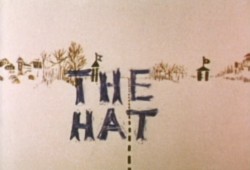 - Here are some drawings from the Hubley short, The Hat.
- Here are some drawings from the Hubley short, The Hat.
I first became aware of this short about the absurdity of border lines from a pre-PBS “educational TV” show on NY’s WNDT channel 13. Film critic Stanley Kaufman used to host a show called, “The Art of Film” in which he would have guests explaining their individual craft.
I can remember well a segment which featured composer, Elmer Bernstein, breaking down his music for The Magnificent 7. It was very informative and remains with me in memory to this day when I see the film.
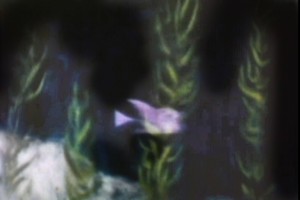 - John and Faith Hubley were on this show with drawings and storyboard and cels and Bgs from The Hat, then in production. I couldn’t have been more impressed and waited impatiently for about a year to see the film at the Beekman theater in NYC playing with Of Stars and Men.
- John and Faith Hubley were on this show with drawings and storyboard and cels and Bgs from The Hat, then in production. I couldn’t have been more impressed and waited impatiently for about a year to see the film at the Beekman theater in NYC playing with Of Stars and Men.
The style was one that John had been developing which had been successful for him. They would take the relatively clean animation drawings (done primarily here by Bill Littlejohn) and would paint them black. By that I mean, they would paint all the free space, outside the borders of the character, with black oil paint. (The oil paint didn’t stretch or buckle or shrink the paper. It just took forever to dry and destroyed the cells of the painters’ brains.)
The cameraman, Jack Buehre, would shoot the Background, then roll back the film and shoot the blackened characters as a double exposure. If there were more than one character it could mean several overlapping exposures.
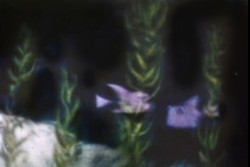
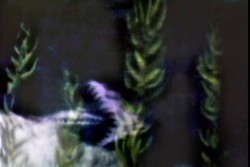
Here are examples of the animation in the final scene.
The exposure of the white drawings was shot at about 70%.
This allowed the characters to pick up some color from the dark violet
backgrounds. A ripple glass was also used over the drawings and bgs.
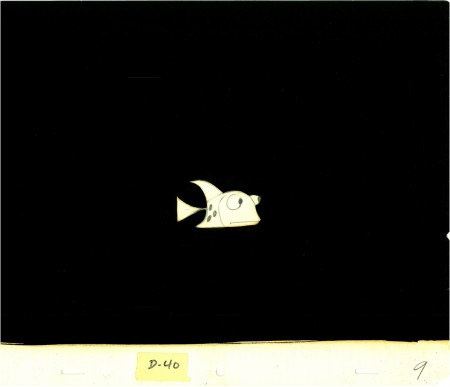
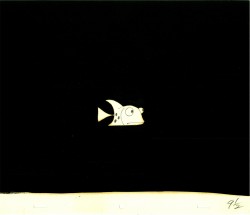
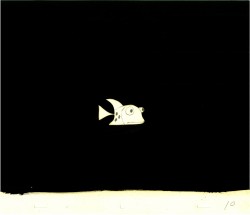
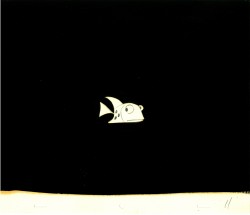
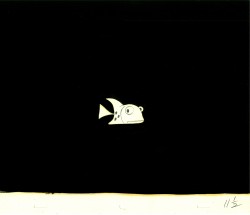
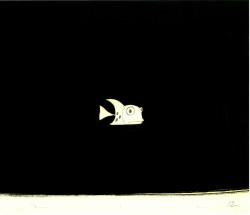
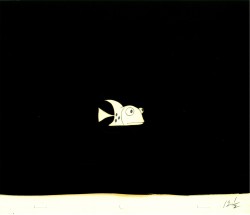
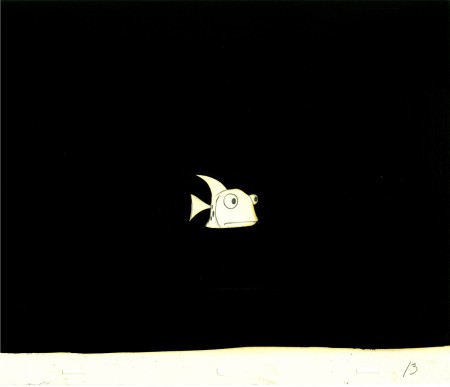
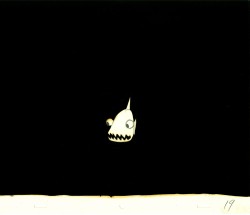
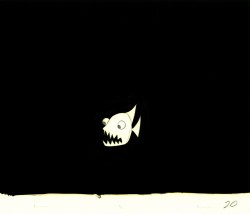
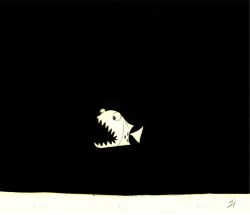
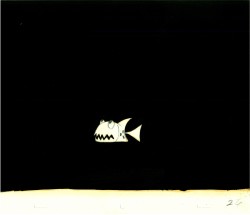
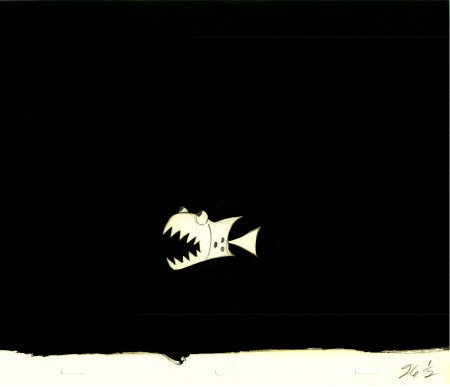
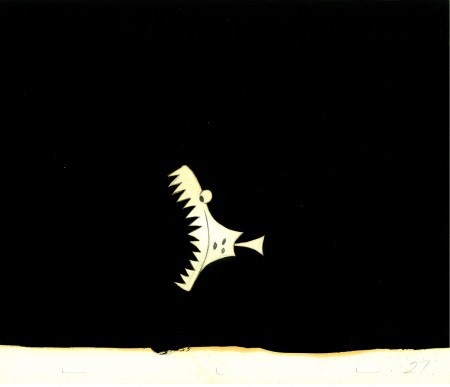
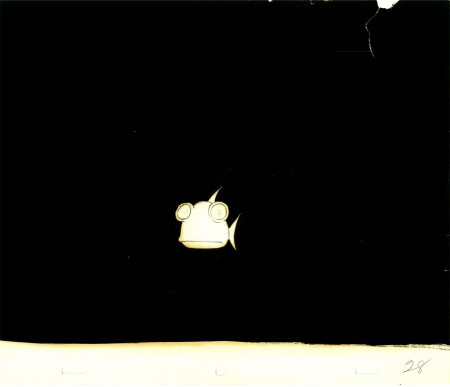

on 03 Aug 2009 at 7:27 pm 1.John Schnall said …
Wow, hand painting each drawing with black in order to do what these days would be a comparatively simple matting job. So much was gained, and yet so much was lost, when we moved away from film…
on 06 Aug 2009 at 2:25 pm 2.Tom Minton said …
You mention that ripple glass was used over both the characters and the background passes. Was effort made to sync the ripple glass speed on each separate pass, or was that a consideration? The visual of two or more passes of ripple glass rippling at different rates probably added to the overall underwater effect.
on 06 Aug 2009 at 3:03 pm 3.Michael said …
There was definitely no attempt to sync up the ripple glass effects – especially since one run was just doubled in over the other.
on 07 Aug 2009 at 12:18 am 4.Mac said …
These drawings are great, thanks for posting. Will have to check out the short.